By Tom Merola, Automotive Tire Expert | Email: [email protected]
A Tiring Discovery
While some drivers are obsessed with their cars, most of them know that taking care of it is a high priority. But what do you do when you get a flat car tire and discover a deer antler inside?
We have gathered some hilarious photos and stories of drivers that ended up at the car shop, scratching their heads when they saw strange objects being pulled out of their car tires! Get ready to see some of the strangest objects sticking out of these flat car tires. Enjoy!
In early 2019, the Ras Al Khaimah Customs Department was able to seize smugglers who tried to illegally bring 12 endangered birds into the UAE by stuffing them in a spare tire. The 12 Houbara Bustards were tied inside sacks with holes to allow them to breathe.
The sacks were placed inside a hollow spare tire.
For decades, Princes from Saudi Arabia and the United Arab Emirates have traveled to Pakistan to hunt these birds. With its opulent black-and-white cravat and elegant headdress, the Houbara Bustard resembles royalty in the bird world. Which might explain why it holds such appeal for Arab princes, who are keen on poaching it. The hunts symbolize the longstanding ancestral tradition of gathering meat using falcons.
In response, the high court of Pakistan issued hunting bans making it illegal to collect Bustards. Luckily, authorities were able to catch these fowl smugglers when their vehicle passed through Al Darah checkpoint.
In the ocean it's common for Marine Biologists to find discarded tires in the stomachs of deceased sharks. On land, it's a different story.
However, back in 2018, truth became stranger than fiction for a motorist in John's Island, South Carolina whose tire was punctured by a shark's tooth. This find is super rare but there's a concrete explanation as to how this might've happened.
This find is super rare but there's a concrete explanation as to how this might've happened.
It's because back before the area was colonized, it was underwater for at least 40 years. When the dirt was moved around for excavation, the sharks teeth show up by the hundreds. I can't recall many other towns that can say "Watch out for shark teeth in the road".
A Houston-area bee removal expert shared video showing how a heavy-duty tire on a disused trailer became home to thousands of honeybees back in 2016.
The bee expert said he had some trouble getting into the tire because of steel belts in the rubber sidewall, but he was able to cut a large enough window to allow him to work.
It would seem that bees don't mind where they set up shop, as long as they're left alone. More than likely, the owner of this tire didn’t welcome them in.
An Arizona Game and Fish Department crew member made a sssssss-tartling discovery after a team member found a rattling friend taking refuge in a wheel well of their vehicle.
Although most drivers don't want to see nails or other objects in their tires, they probably don't want to see snakes swirling around in tires either. Luckily, officials were able to safely extract the slithering reptile with a dip net shortly after.
Needles aren’t an uncommon sight in the neighborhood, but a syringe sticking out of a van’s flat tire was a first. That's definitely one of the objects that should not be on the streets. Not only is it a danger to drivers, but it could be harmful to pedestrians as well.
While most car punctures are caused by man-made materials, who would have guessed that porcupine quills were also sharp enough (and strong enough) to pierce their way through the thick, tough rubber on our tires?
Each porcupine quill has up to 800 barbs on the first 4mm of the tip, with backward facing hooks which make the quills difficult to remove without causing more damage.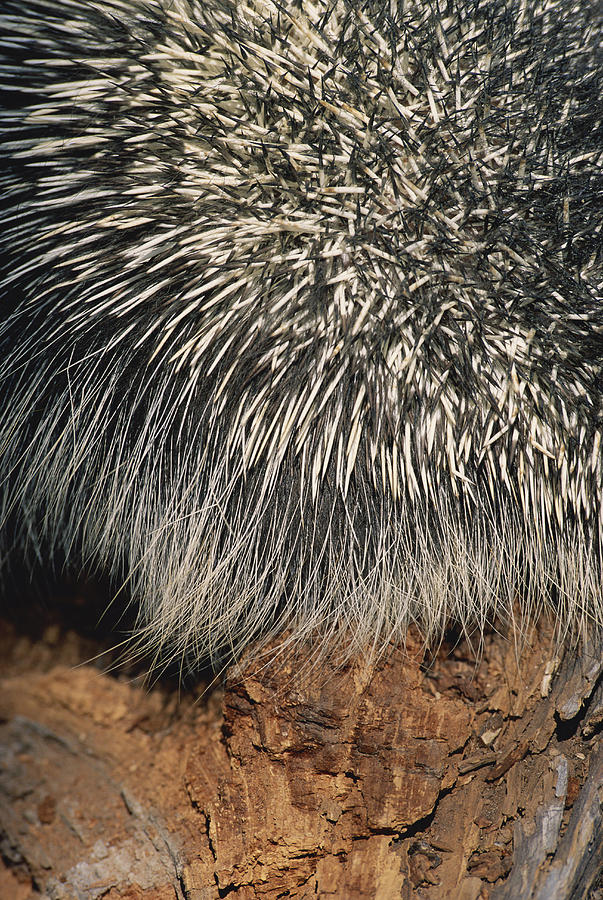
Believe it or not, the tires that traverse along the Alaska Highway are exposed to harsh conditions and unusual debris. Surprisingly, one of the many causes of flat tires in this remote area are Porcupine quills. People run over them all the time without realizing how much damage they can cause.
Fred DeVries, of DeVries Tire Co., and his counter man Chuck Henckel filled a jar over the last two years with the many items they found either inside a tire or stuck in the tread as they repair flats. They are starting a second jar.
You have to be careful when you're driving on the road to avoid hitting animals. It seems like there was one driver who couldn't avoid a deer – or at least, he couldn't get away from a deer's antler.
He got antlers stuck in his tires and off to the repair shop he went. Just an unfortunate accident.
This is sad to see. A puppy was playing around the tire and managed to get its head stuck in the rim.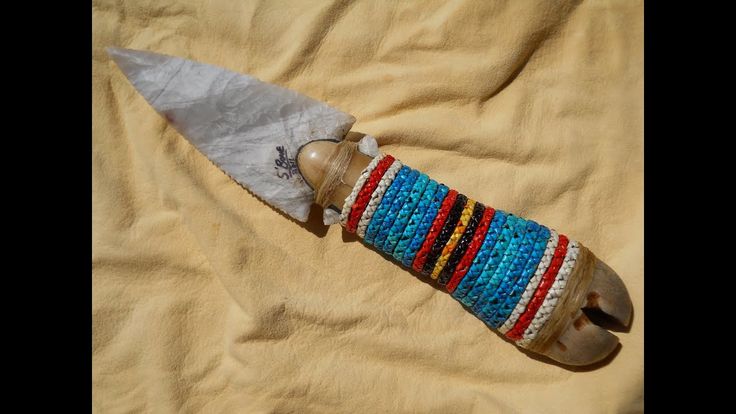 The puppy looks so sad, but the good news is that since the dog was able to get its head inside, that means that the owner was able to get it out. It's still unpleasant to see an animal trapped.
The puppy looks so sad, but the good news is that since the dog was able to get its head inside, that means that the owner was able to get it out. It's still unpleasant to see an animal trapped.
Porcupines can be clumsy creatures. Since they eat tree bark, it isn't uncommon for them to fall occasionally from their arboreal buffets. So what happens when porcupines prick themselves? Porcupine quills are coated with antibiotic fatty acids that help speed up the healing process in case they pierce themselves [source: Roze et al]. The quills also have a specialized release mechanism that controls when a porcupine can actually discharge a quill because unlike a popular myth, they cannot shoot these barbed hairs at will.
The quills also have a specialized release mechanism that controls when a porcupine can actually discharge a quill because unlike a popular myth, they cannot shoot these barbed hairs at will.
This release mechanism is based on a loop of thick connective tissue that surrounds the quill follicle and binds it to the dermis under the surface of the skin. When the porcupine is relaxed, that tissue loosely holds the quill in place to keep it from lodging deep into the flesh, in case the animal falls on it. However, when porcupines grow tense (like when warding off a predator), the muscles surrounding that connective tissue pull it taut. If the quills are erect and experience an impact, the force from that contact drives the quill inward, slicing the tightened tissue and freeing the quill. Once the root of the quill is loose from the porcupine's skin, it can lodge into the predator's skin. A study on this release mechanism found that this process makes it nearly 40 percent easier for the quill to leave the porcupine's skin than if you tried to pull it out without any prior impact [source: Roze].
Advertisement
As mentioned earlier, once you get stuck with a porcupine quill, the barbs on the tip naturally drive it deeper into your skin. It requires significant force to remove this little gift. If you happen to be the unlucky recipient of a porcupine quill in the arm or leg, grab a pair of needle-nose pliers and prepare yourself for a pinch. The best way to remove porcupine quills is simply to pull them out. Because of those nasty barbs, you'll need to work firmly but delicately to prevent the quill from snapping off. In case that does happen (and you prefer not to have a doctor dig the barb out of your skin), you're not in much danger. The quills don't contain poison, and the barbed tip should work its way out of your skin eventually. The antibiotic coating on the quills also reduces the chance of primary infection [source: Gibbons]. But as you would with a large splinter, disinfect the area and apply antibiotic ointment to any open wound to ward off secondary infection.
Unless you make a habit of trolling about coniferous forests, your pet is more likely to get slapped by a porcupine tail than you are. Curious dogs in particular may get muzzles full of quills. If there are only a few stuck in your pet's body, you can remove them yourself, depending on the dog's temperament. If quills are inside Fido's mouth or throat, it's safer to call your veterinarian.
Even though a porcupine loses some of its quills, it can still strike again. The quills grow back after several months. To avoid getting poked, keep an ear out for their telltale rattle and your nose on standby for a suspicious stink the next time you're near their habitat.
Sources
 "Wild Mammals of North America." JHU Press. 2003. (Oct. 1, 2008)http://books.google.com/books?id=-xQalfqP7BcC
"Wild Mammals of North America." JHU Press. 2003. (Oct. 1, 2008)http://books.google.com/books?id=-xQalfqP7BcC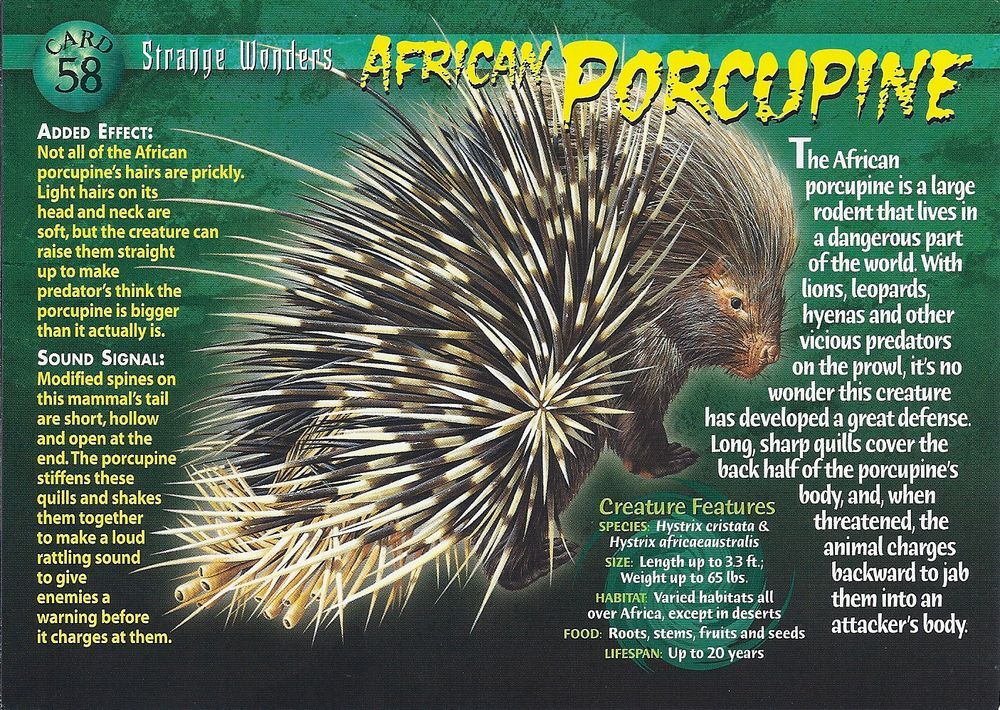 naturalhistorymag.com/master.html?http://www.naturalhistorymag.com/0306/0306_feature.html
naturalhistorymag.com/master.html?http://www.naturalhistorymag.com/0306/0306_feature.html
Cite This!
Please copy/paste the following text to properly cite this HowStuffWorks.com article:
Cristen Conger "What's the best way to remove porcupine quills?" 15 October 2008.
HowStuffWorks.com. <https://animals.howstuffworks.com/mammals/remove-porcupine-quills.htm> 11 December 2022
Profile
Medical technology and technologies of the future December 11, 2012, 14:04 December 11, 2012, 03:04 pm December 11, 2012, 04:04 PM December 11, 2012, 17:04 December 11, 2012, 18:04 December 11, 2012, 19:04 December 11, 2012, 20:04 December 11, 2012, 21:04 December 11, 2012, 22:04 December 11, 2012, 23:04 December 12, 2012, 00:04
(Illustration by Jeffrey Karp, Harvard Medical School).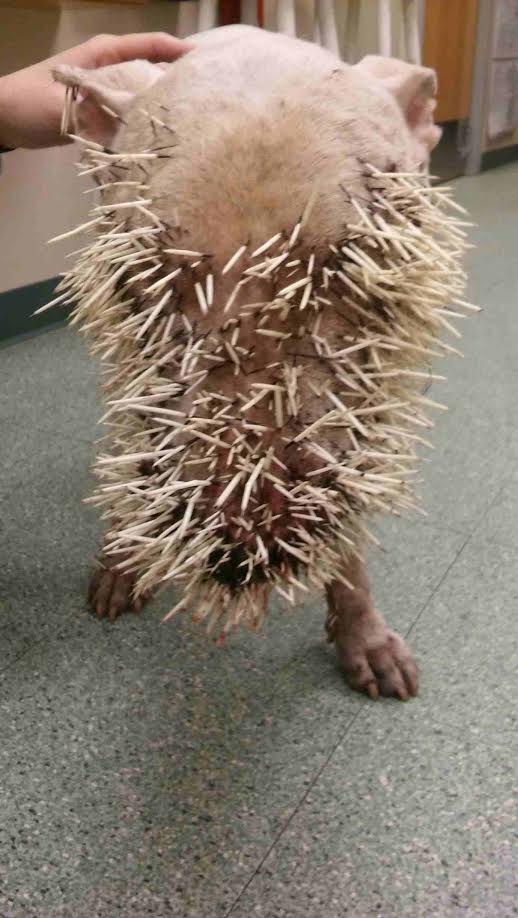
(Illustration by Jeffrey Karp, Harvard Medical School).
(Illustration by Jeffrey Karp, Harvard Medical School).
(Illustration by Jeffrey Karp, Harvard Medical School).
(Illustration by Jeffrey Karp, Harvard Medical School).
(Illustration by Jeffrey Karp, Harvard Medical School).
(Illustration by Jeffrey Karp, Harvard Medical School).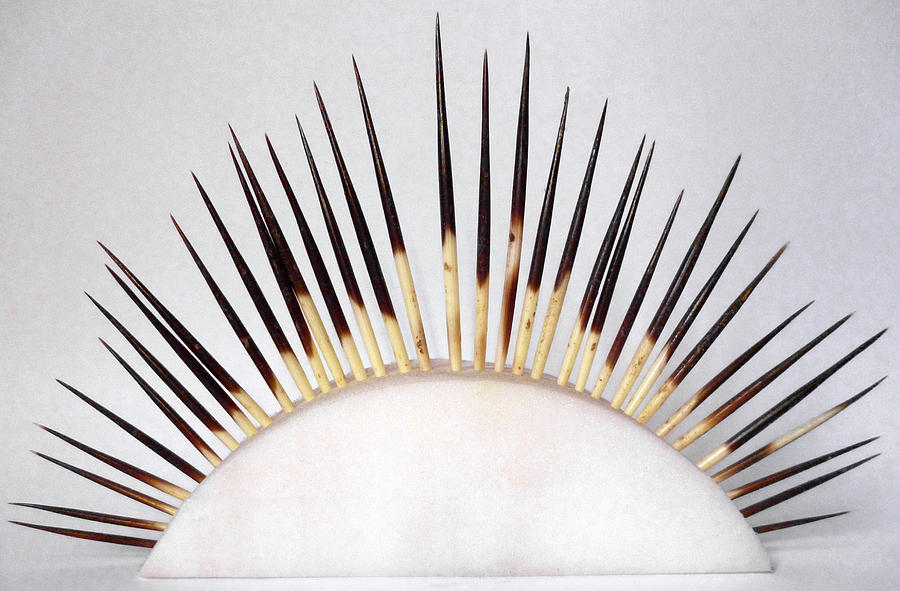
(Illustration by Jeffrey Karp, Harvard Medical School).
(Illustration by Jeffrey Karp, Harvard Medical School).
(Illustration by Jeffrey Karp, Harvard Medical School).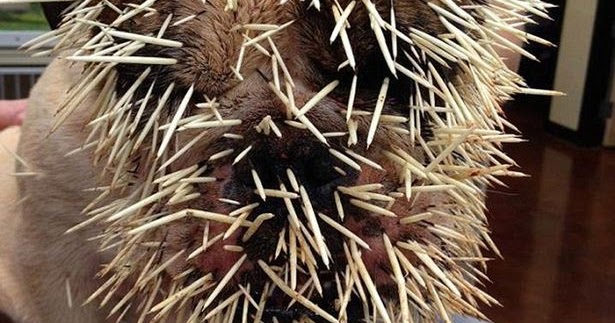
(Illustration by Jeffrey Karp, Harvard Medical School).
(Illustration by Jeffrey Karp, Harvard Medical School).
American scientists have discovered the secret of porcupine quills, which easily penetrate the skin and firmly get stuck in the wound. The research will help create new medical instruments.
One can only sympathize with the predators who decided to eat the North American porcupine ( Erethizon dorsatum ) for lunch. Many dog owners in the US know how difficult it is to remove the long, sharp needles sticking out of the snout of their overly curious pets.
Spiny animals from the order of rodents carry up to 30 thousand modified hairs on their backs, which easily pierce the soft tissues of the attacker and get stuck in the wound.
A group of scientists led by Jeffrey Karp of Harvard University decided to take a close look at the porcupine's weapons in order to use the secrets of nature in medicine.
"We're constantly looking for examples in nature that can inspire us to new approaches in medicine," says Karp. "I think that evolution produces better solutions to some problems."
Scientists have long known that the tip of each porcupine quill is studded with small spikes. When punctured, they dig into the tissues and make the removal of the spine difficult and painful. Nature has come up with such a trick so that the predator remembers the meeting with the porcupine once and for all.
Nature has come up with such a trick so that the predator remembers the meeting with the porcupine once and for all.
To better understand how the porcupine's "terrible weapon" works, the researchers pierced various objects, including chicken meat, pig skin and synthetic human skin. With the help of a special device, they measured the force that had to be applied to insert the needle and then remove it. Then the scientists completely or partially removed the thorns from the spines and repeated their findings.
As expected, the barbed needles got stuck in the meat and skin and required considerable force to remove them. At the same time, the smooth-tipped spines came out easily. The researchers found that the teeth located on the last millimeter of each needle play the main role. It is thanks to them that porcupine arrows are so difficult to pull out.
But there were some surprises. So, biologists have found that thanks to the outgrowths on the spines, the needle enters the tissues much easier.
"We were surprised to find that the prongs have a dual function," Karp says. "They not only hold the needles in the wound, but also make it much easier to penetrate."
A similar effect is provided by the teeth on the blade of hunting knives, which also increase the penetrating power.
Researchers copied the structure of porcupine spines by making some polyurethane quills. They also easily penetrated into pieces of meat and held tightly inside them. To remove some copies, it took 30 times more effort than when removing the original.
The results of the study, published in the journal PNAS, could be used to develop new surgical staples that hold firmly to wound margins and painless injection needles. Karp and his colleagues have already made a prototype of a new needle that is 80% easier to penetrate the skin and tissue.
In addition, Jeffrey Karp previously worked on the creation of an implant that releases cells from the bloodstream, and developed nanotechnological protection against nickel allergy.
Also related:
Scientists suggest using a laser for painless injections
A new syringe without a needle injects drugs under pressure
Americans have created silk microneedles for painless drug delivery
All broadcast
A porcupine's body is covered with over 30,000 quills, which it sheds if it suspects that it is being attacked. This means that a dog will never come out victorious in a fight with a porcupine - even if it was more curious than aggressive towards the prickly creature. What to do in a situation where a dog has become a victim of porcupine quills?
Porcupine quills are designed to cause maximum damage.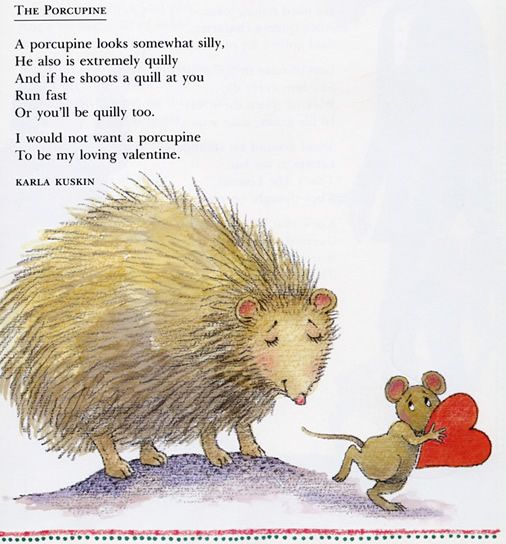 After all, it is the animal's defense mechanism. At the end of each needle are tiny teeth, much like an arrowhead or a fishhook. After getting into the skin, it is difficult and painful to pull them out.
After all, it is the animal's defense mechanism. At the end of each needle are tiny teeth, much like an arrowhead or a fishhook. After getting into the skin, it is difficult and painful to pull them out.
Therefore, pet owners should not try to remove needles themselves, advises River Road Veterinary Clinic. In addition to dogs, the River Road Clinic treated cats, horses, sheep and a bull, which, unfortunately, met with a porcupine.
If a dog comes home with a muzzle full of needles, you should immediately take him to the veterinarian for treatment. She will most likely be in a lot of pain. This pain will cause her to poke at the needles with her paw, which can cause them to dig even deeper into the skin or break, making it more difficult to pull them out. In addition, the longer the needles remain in the animal's body, the more rigid and brittle they become, making them more difficult to remove.
Since a frightened and injured dog is more likely to bite or lash out, the veterinarian will likely administer an anesthetic to reduce the pain before removing the needles.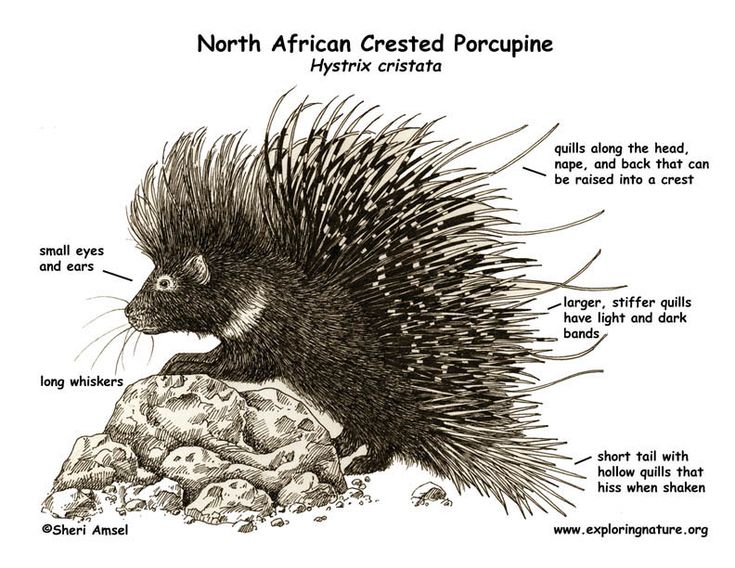 In addition, River Road Clinic reports that a veterinarian will recommend rabies quarantine and other preventive measures, as porcupines are known carriers of the disease. He may also prescribe antibiotics to reduce the chance of developing a bacterial infection.
In addition, River Road Clinic reports that a veterinarian will recommend rabies quarantine and other preventive measures, as porcupines are known carriers of the disease. He may also prescribe antibiotics to reduce the chance of developing a bacterial infection.
Due to their barbs, porcupine quills can become lodged in the dog's soft tissue and penetrate deeper into the body if not removed immediately. The more the animal moves, the more likely it is that the needles will break and dig deeper into the muzzle or paws. Do your best to keep your dog calm and still until you take him for treatment.
Veterinary Hospital Lucerne warns that needles can dig into joints, damage internal organs or cause abscesses. It is best to take the animal to a veterinary clinic as soon as possible. The veterinarian may perform an ultrasound to locate deep needles and attempt to remove them, especially in cases where the dog was not brought in immediately after the attack.
In order to minimize the chance of encountering a pet with a porcupine, it is necessary to know the habits of the latter. According to the Angell Animal Medical Center of the Massachusetts Society for the Prevention of Cruelty to Animals, these mild-mannered, cat-sized herbivores feed exclusively on plants, fruit, and tree bark, and often sleep during the day in burrows or hollow logs. Porcupines are primarily nocturnal animals, so it is wise not to allow a dog to enter densely forested areas at night at night.
Keep your pet away from areas where porcupines are common, especially if you suspect they may be living there. One study published in the Canadian Veterinary Journal of 296 dogs who visited the veterinarian after a porcupine fight showed a marked increase in porcupine encounters in the spring and fall.
It is best to keep your pet on a leash and be aware of its surroundings to avoid any interaction with local wildlife.